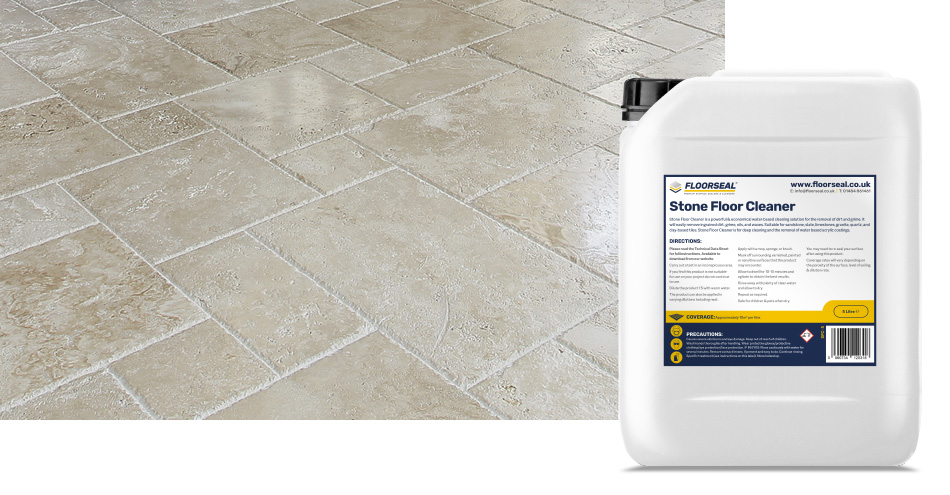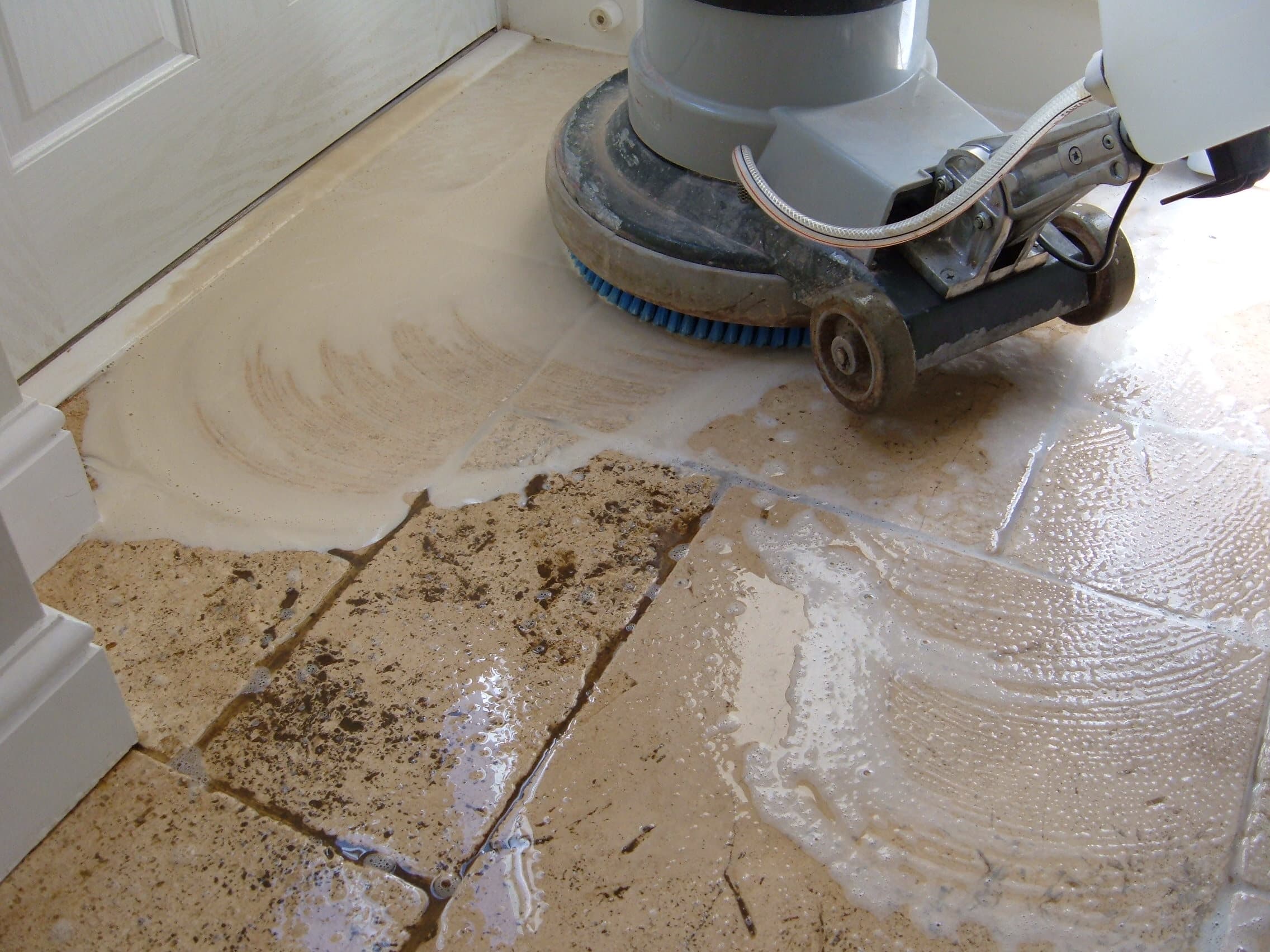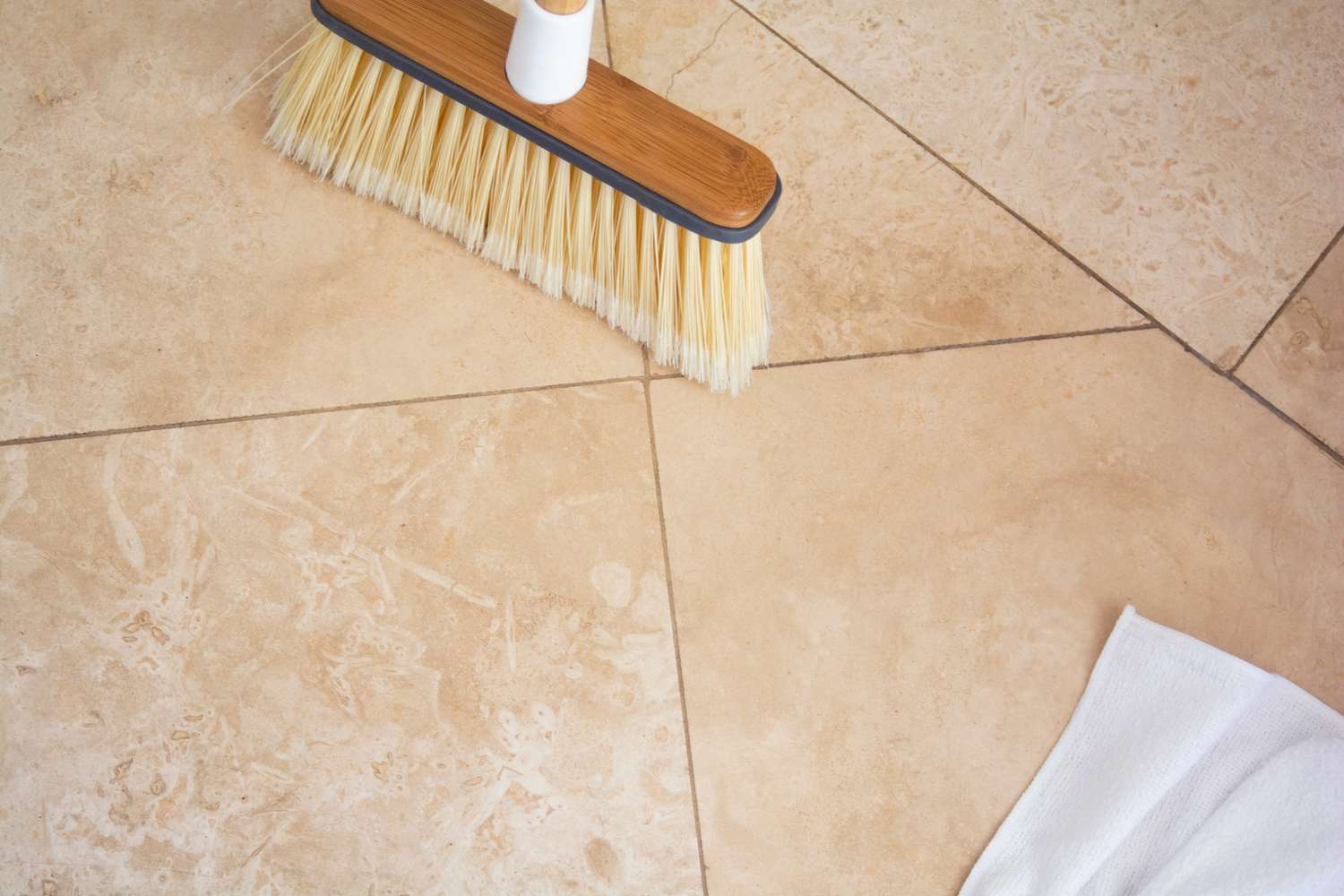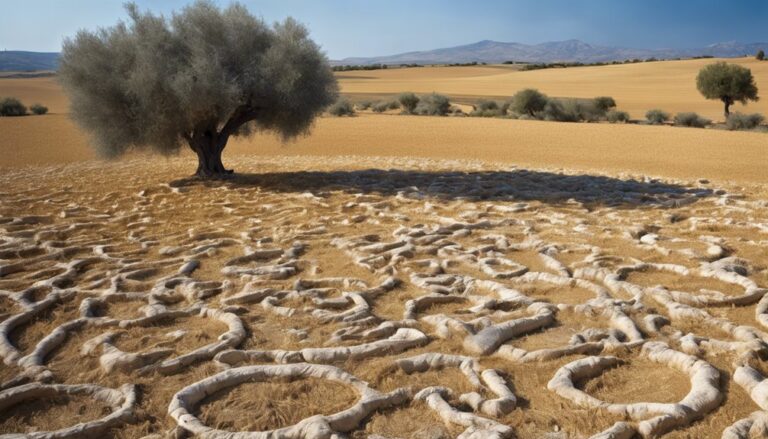Are your travertine floors looking a little dull or stained? You might be wondering how to restore their natural beauty without causing any damage.
Travertine, with its timeless elegance, can transform any room, but keeping it clean requires a bit of special care. If you’re searching for the best way to make your floors gleam like new, you’re in the right place. We’ll reveal simple and effective cleaning techniques that will help you maintain your travertine floors’ stunning appearance.
By following our tips, you can protect your investment and enjoy floors that impress every guest. Ready to learn the secrets to pristine travertine floors? Let’s dive in!

Essential Cleaning Supplies
Begin with a soft broom or vacuum. This helps remove dust and dirt. Next, you’ll need a bucket of warm water. Ensure the water is not too hot. Hot water can harm the stone. A mild dish soap or stone cleaner is perfect. Avoid using harsh chemicals. These can damage the travertine. A microfiber mop is best for washing. It won’t scratch the surface. Dry the floor with a soft towel. This prevents water spots. Also, keep a sponge handy for stains. It helps in quick clean-up. Remember, always test a cleaner on a small area. This ensures it won’t harm the stone.

Routine Cleaning Steps
Regular cleaning keeps your travertine floors looking great. Start by sweeping the floor. Use a soft broom to avoid scratches. Vacuuming is another option. Make sure the vacuum is safe for hard floors. Next, mop with warm water. Avoid harsh chemicals. They can damage the stone. A pH-neutral cleaner is best. It protects the surface.
Dry the floor with a soft cloth. This prevents water spots. Avoid vinegar or lemon. They can dull the shine. Never use abrasive pads. They can scratch the floor. Keep your travertine floor clean and shiny with these easy steps.
Deep Cleaning Techniques
Cleaning travertine floors requires gentle techniques to preserve their natural beauty. Use a pH-neutral cleaner and a soft cloth. Avoid harsh chemicals to prevent damage. Regular maintenance keeps these stunning surfaces looking their best.
Using Ph-neutral Cleaners
Travertine floors need gentle care. pH-neutral cleaners are safe for them. These cleaners prevent damage. Mix the cleaner with water. Use a soft mop. Avoid harsh scrubbing. This keeps the floor shiny. Clean regularly to avoid dirt buildup. A gentle approach helps maintain beauty.
Steam Cleaning Considerations
Steam cleaning needs caution. Too much heat can harm the floor. Use a low setting if you choose steam. Test a small area first. This ensures safety. Steam can loosen dirt effectively. But remember, less is more. Keep the floor dry after cleaning. This prevents water damage.

Stain Removal Methods
Oil stains can be stubborn. Use a soft cloth to blot the stain. Do not rub. Baking soda is your friend here. Sprinkle it on the stain. Let it sit for 24 hours. Baking soda absorbs the oil. After that, gently wipe away the powder. Use a soft, damp cloth.
Organic stains need a gentle touch. Hydrogen peroxide works well. Apply it to a soft cloth. Dab the stain. Be gentle. Let it sit for a few minutes. Rinse with water. Dry with a soft towel. Hydrogen peroxide helps remove the stain.
Polishing And Sealing
Travertine floors need special care. Choose a polish made for natural stone. This keeps the floor shiny and new. Avoid polishes with strong chemicals. They can damage the surface. It’s best to test the polish on a small area first. This ensures it does not harm the floor. Always follow the instructions on the polish bottle. This helps in applying the polish correctly.
Sealing travertine floors is important. It protects the stone from stains and spills. Seals should be applied every few years. This keeps the floor looking fresh. Use a sealant made for natural stone. Always clean the floor before sealing. This ensures no dirt gets trapped. Follow the sealant instructions for best results.
Preventive Measures
Never use harsh chemicals on travertine floors. They can cause damage. Always pick gentle cleaning products. Look for labels that say pH-neutral. These are safe for the stone. Avoid bleach and ammonia. These can ruin the floor’s beauty. Wipe spills quickly. This prevents stains and damage. Keep your travertine floor looking new.
Place mats and rugs at doorways. They catch dirt and moisture. This keeps the floor clean. Use rugs in high traffic areas. It reduces wear and tear. Choose rugs with a non-slip backing. This keeps them in place. Clean mats and rugs often. They can get dirty fast. Protecting your travertine floor is easy with these steps.
Common Mistakes To Avoid
Using the wrong cleaner can harm travertine floors. Avoid products with acid or harsh chemicals. They can damage the stone. Use a cleaner made for travertine. This keeps the floor safe and clean.
Sealing travertine floors is important. It protects the stone from stains and damage. Many people forget to seal their floors. This mistake can lead to costly repairs. Seal the floors regularly.
Wet mopping can cause problems. Excess water can seep into the stone. This may cause stains or cracks. Use a damp mop instead. It helps keep the floor dry and clean.
Maintaining A Regular Schedule
Travertine floors need gentle care. Start with sweeping each week. This removes dirt and dust. Use a soft broom or vacuum cleaner. Avoid harsh bristles or beater bars. These can scratch the surface.
After sweeping, mop the floor. Use warm water mixed with mild soap. Never use vinegar or acidic cleaners. They damage travertine. Dry the floor well to prevent water spots.
Inspect floors monthly. Look for stains or damage. Quickly clean spills to prevent stains. Use a damp cloth for spot cleaning. Avoid strong chemicals as they harm the stone.
Seal floors every year. This protects from stains and damage. Choose a quality sealant made for travertine. Follow instructions carefully for best results.
Frequently Asked Questions
What Is The Best Way To Clean Travertine Floors?
The best way to clean travertine floors is using a mild soap or stone cleaner with warm water. Avoid acidic cleaners as they can damage the surface. Regular sweeping or vacuuming helps in maintaining their natural beauty.
Can I Use Vinegar On Travertine Floors?
No, vinegar is acidic and can harm travertine floors. It can erode the stone’s surface and cause discoloration. Instead, opt for pH-neutral cleaners specifically designed for natural stone.
How Often Should Travertine Floors Be Sealed?
Travertine floors should be sealed every 1 to 2 years. This helps protect against stains and moisture. Regular sealing maintains the floor’s appearance and enhances its durability.
Are Steam Cleaners Safe For Travertine Floors?
Steam cleaners are not recommended for travertine floors. The high heat and moisture can damage the stone. Stick to gentle cleaning methods using a soft mop and appropriate cleaners.
Conclusion
Regular cleaning keeps travertine floors shining. Gentle solutions are best for this stone. Always dry floors after cleaning. Avoid harsh chemicals to protect the surface. Stains need quick attention to prevent damage. Maintenance involves regular sweeping and mopping. This routine helps preserve your floor’s beauty.
Consider professional cleaning for tough stains. Protect your investment with careful care. Travertine is durable yet needs attention. Following these steps ensures long-lasting floors. Remember, a little care goes a long way. Enjoy your pristine travertine floors with these easy tips.
Your home will look lovely and inviting.




